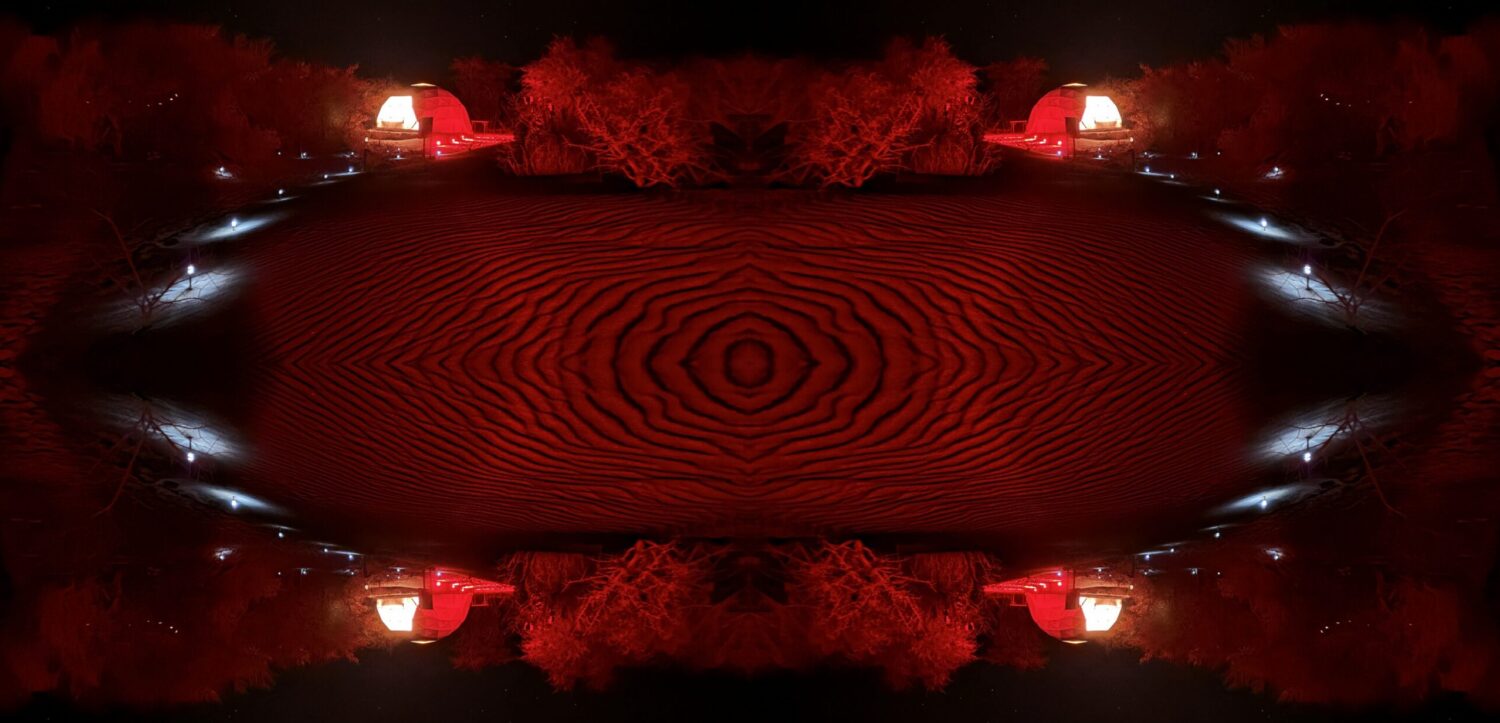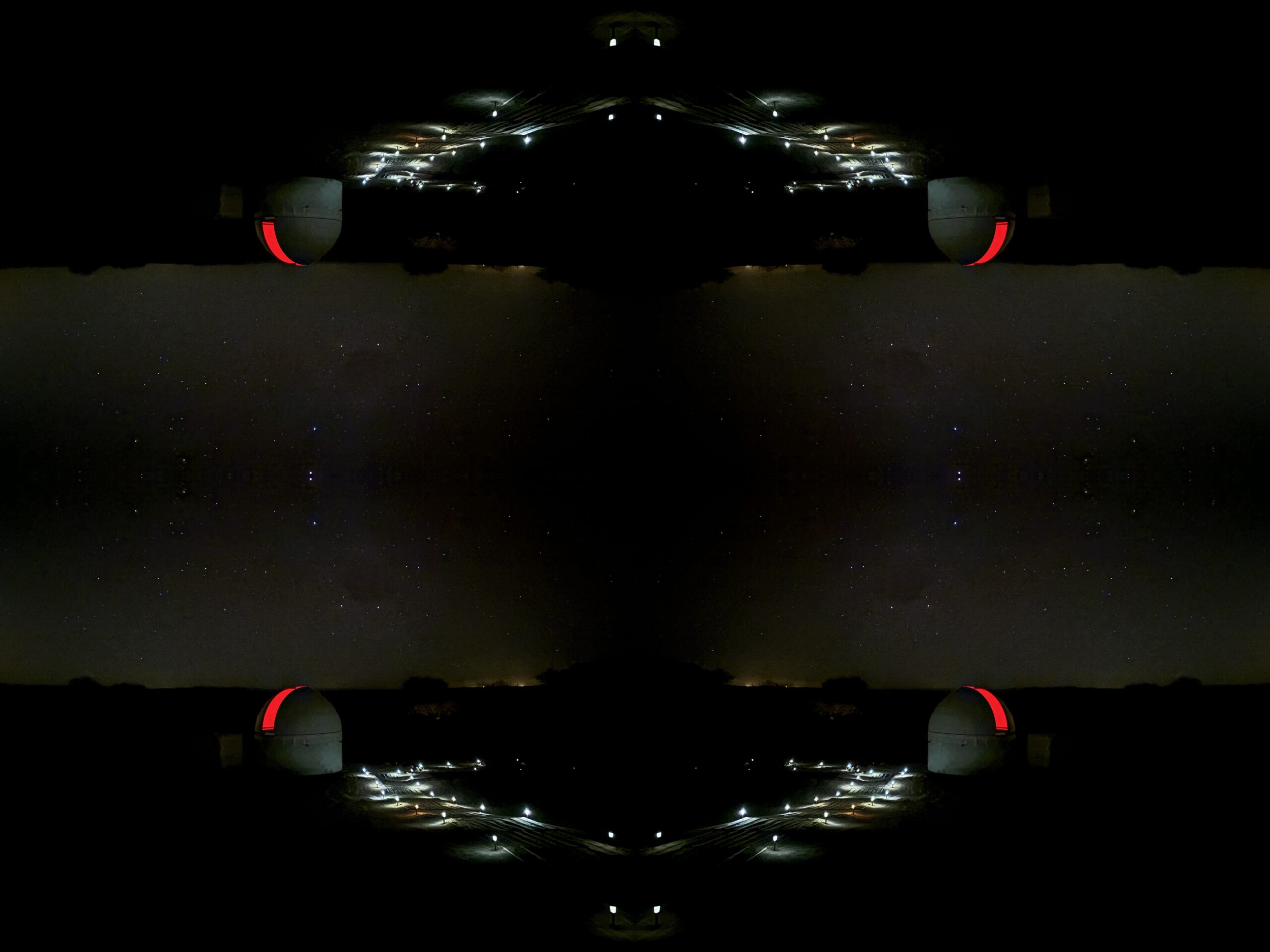Enclosure

The evergreen grass of Rapa Nui, sterile sands of the Atacama, element-battered mud of Patagonia, and coarse gravel of Arica and Parinacota. Particulate matter, dried and encrusted on shoe soles, collected and carried four hundredths of a light-second – a quarter planet – away. Memory fresh and developing.
Granules slowly becoming indistinguishable from the rest, destined to disappear with time.
– / – / –
The Chilean jaunt, undertaken this past month, was a bittersweet affair. The country has plenty of character, charm, and beauty. Its capital was bustling, more so than usual as the nation approached and celebrated its anniversary of independence. Folk dancers paraded the streets, unions led multiple protests, and students on field trips could be found at every cultural site. All under the watchful eyes of the pervasive police, lining major intersections in their conspicuous green and white sedans. The remote island of Rapa Nui gifted us two days of perfect weather sandwiched between heavy rains and fog. Plenty of time to gaze upon the myth-inducing Moai and stroll upon its rocky shores as the Pacific crashed relentlessly into jagged outcrops. Of course, the Atacama Desert lived up to the hype. Sand dunes, salt flats, and scintillating starlight to enliven the soul. Patagonia’s jewel – the Torres Del Paine park – was another highlight. The wind constantly threatened to lift us off our feet as condors and caracaras glided the currents. Snow-capped peaks, glacial lakes, novel flora – all in abundance. Finally, Arica and Parinacota offered a repose; slower days seaside watching the waves or driving around Lauca, looking up at volcanos or down at lagoons as alpacas, vicunas, guanacos, and llamas dotted the landscape.
Why bittersweet? The experience was somewhat spoiled by an illness I caught a few days into the trip, which only worsened throughout. I did not fully recover until a few days ago. It meant a slower pace, lack of appetite, and diminished opportunity to fully engage with my companions. But it did afford me some time alone to contemplate things.
I can take you to one of those moments.
Beachside in Arica. September 16 at 5am, near the end of our excursion. It was a chilly morning and I was seated on a deck chair under layers as the whitecaps roll in. I had left the hotel room that all of us were sharing to avoid disturbing the others. I sipped a lukewarm tea trying to quell the coughing fits. The kindle displayed Liu Cixin’s Death’s End. The pain and hacks interrupted my thoughts. I looked at my phone between chapters – the news, pictures and videos taken, the front page of Reddit – searching aimlessly within distractions for meaning to latch onto.
And then a few threads coalesced.
I reflected on a visit we made to an observatory near San Pedro de Atacama a week earlier. The amateur astronomer reminded us that when we look at the stars, we are looking at the past. With the exception of bodies within our solar system, the time that separates us from those faraway pinpricks of light must be measured in years. Alpha Centuari, a tri-solar system, visible as it was 4 years ago. Vega, inspiration for Carl Sagan’s Contact, 25 years out. Light from Betelgeuse and Rigel, having travelled 642 and 864 years respectively, showcasing their medieval visage. Every star in the night sky regaling us with the same cosmic truth: that we are encircled by visions of what once was.
I read another chapter of Death’s End. The book’s scope is immense and imaginative. It delivers a creative interpretation of physics and possible technologies that I have seldom seen matched. But it too cleverly inserts historical moments, anecdotes, and references into its story. The author utilizes longstanding debates in philosophy and science in building his conflicts. He takes us hundreds of years into the past and future, explicitly tying them together using fictional explanations, but implicitly emphasizing the cycle of human behavior. While not the ‘Rare Earth’, ‘Gaian Bottleneck’, ‘Great Silence’, or dozens of other theories behind extraterrestrial life, his fundamental model* represents an amalgamation of popular discourse.
I thought about a conversation had recently, where I reiterated how I do not honor or celebrate any days in the year. That instead I choose to hold high those close to me through love and regular engagement. To ponder the lessons of education when it is most consequential – at the polls, through advocacy or exchanges, and in my everyday treatment of others. Holidays are forgotten but their significance is not. Lest any ugliness of bygone eras repeat.
These three threads, and the memory of sitting on that deck chair battling cough with these thought bubbles appearing and disappearing like quantum foam, are all about time past. How the cosmic clock traps us in space; how we understand its ticking and manipulate it to suit our needs; how we adjudge its pace on our journeys of self-edification.
It dawns on me how present the past is. It is much of what we think about and much of what we see. It shapes current opinions, dialogue, and endeavors. Even the future, whether imagined or predicted, is painted with the brush of the past. Its outline apparent. How to apply the color the only question, something that becomes clearer the more you look at the palette of preceding orbits.
Nature, history, and our understanding – of past, present, and future – these all seem so… repetitive. Like the routine returned to now that I am back in Prince George and back to work. Cooking, cleaning, running errands, exercising, reintroducing myself to habits abandoned while galivanting. On some level, this checks out. We are all at the mercy of a handful of particles and the laws that govern them. We react to our surroundings. Without them, the self has nothing to bounce off of.
So maybe that’s what Chile was – a brief, false sense of falling out of time. Of marveling at archaic statues, glistening scenery, grazing creatures, and the stars that oversee it all with indifference. Except it was not. The fences of this enclosure, as mentioned, may be hidden at times, but are ever-present. When not obvious in the environment, they can manifest in the mind as inescapable meditations, prying into the most silent instances.
A universal state of affairs that does not suffer recalcitrance.
– / – / –
Thus, the past is useful but overbearing. Its currency, time, is the great signifier that holds us all to account. None of this is directly obvious, but it is in each of our peripheries. A cloudless sky away from landing with immediacy.
A final comment: the previous eras, like a night sky free from light pollution, must be actively sought, studied, and reckoned with. We skip examinations of history at our peril. One of my favorite documentaries, coincidentally filmed in Chile, is 2010’s Nostalgia for the Light. The film poignantly contrasts the search for answers in the stars to searches for answers in the dirt of the Atacama desert; it simultaneously focuses on astronomers who use the desert as an observatory and women who dig for the remains of loved ones (those unjustly executed during the Pinochet regime), interspersing the narrative with interviews. Nostalgia is a powerful illustration of our attachment to the past, be it through exploration above or excavation below.
As one of the widows appeals: “I wish the telescopes didn’t just look at the sky but could also see through the Earth.” Here in Canada, similar aspirations reside within Indigenous communities seeking funding to employ ground-penetrating radar to find remains of their families, friends, and community members, buried without care at residential school sites. And across the world, echoes resonate from peoples neglected, those who have endured persecution in all its forms.
The trappings of time must be taken seriously. We cannot look anywhere without looking back.

*I share very little about the book here because I do not want to spoil it for those who have not read Liu Cixin’s Remembrance of Earth’s Past series (a.k.a. the Three-Body series). The significance of the ‘Dark Forest’ model that eventually dictates the behavior of all advanced life in the books is revealed in piecemeal format. As this occurs, some may recognize that Liu is deriving the wider picture from existing debates within Cosmology. I recommend the trilogy as a must-read to all, regardless of your affinity for science fiction.